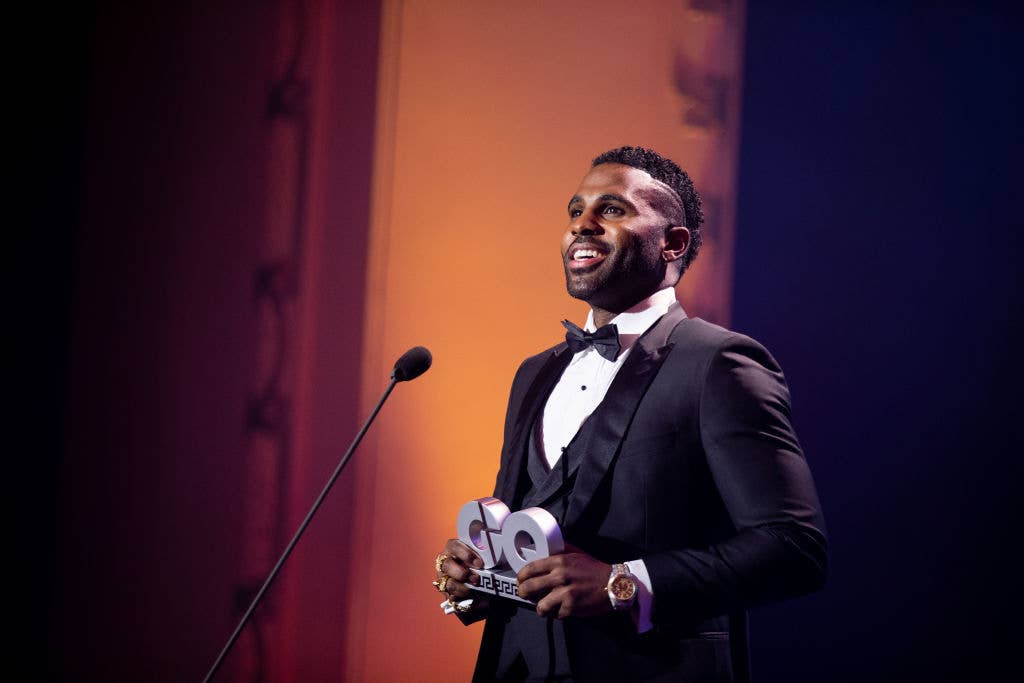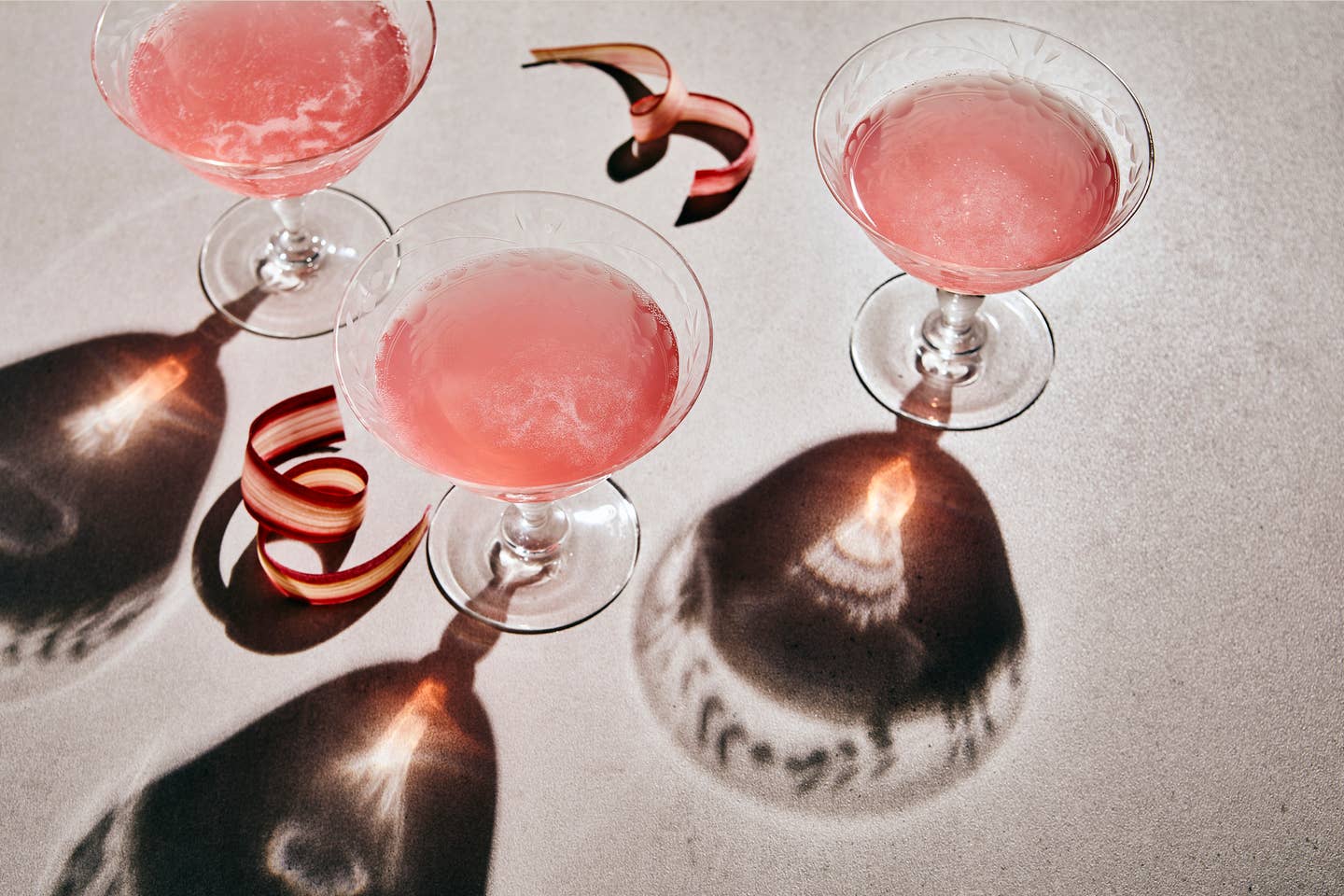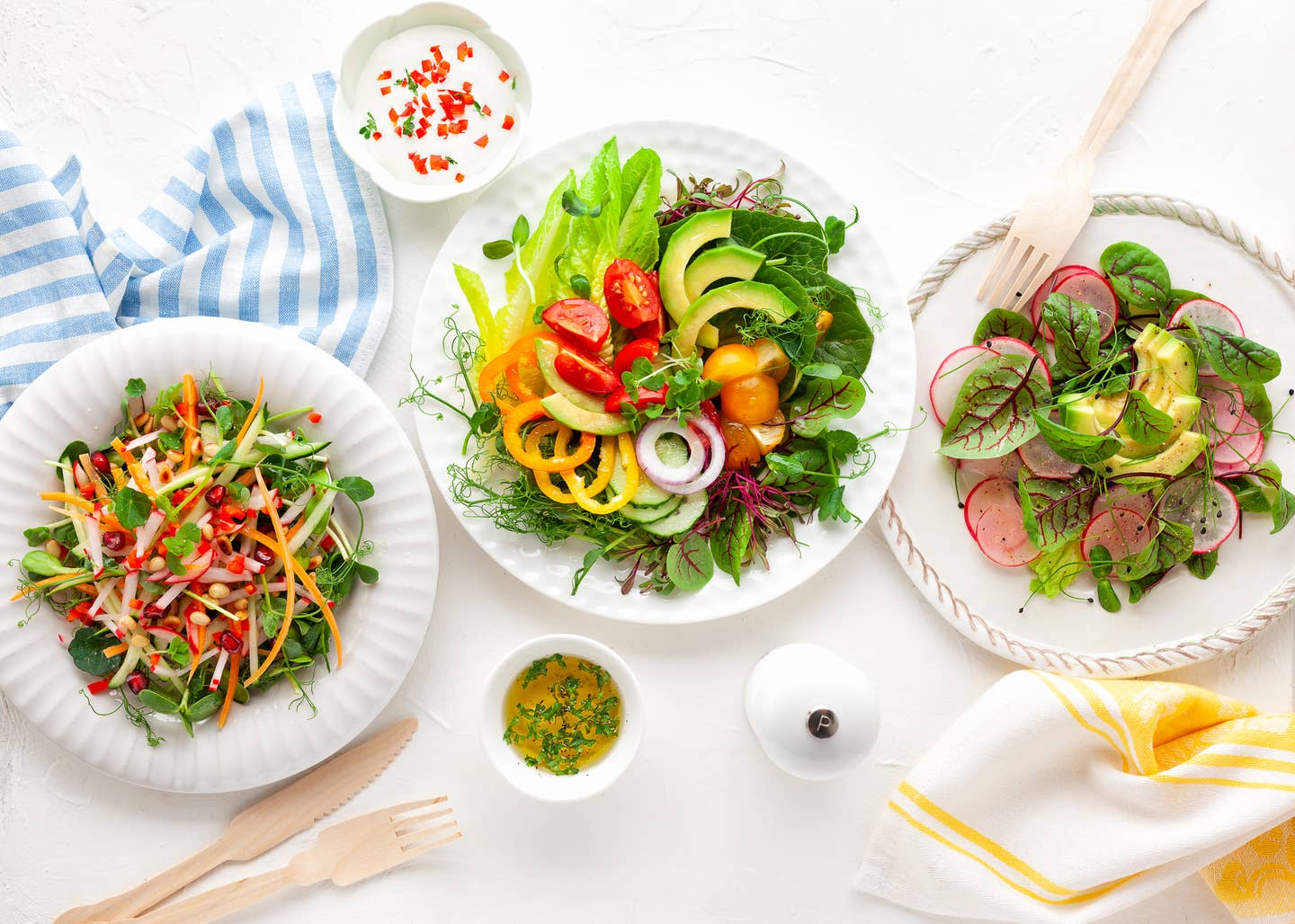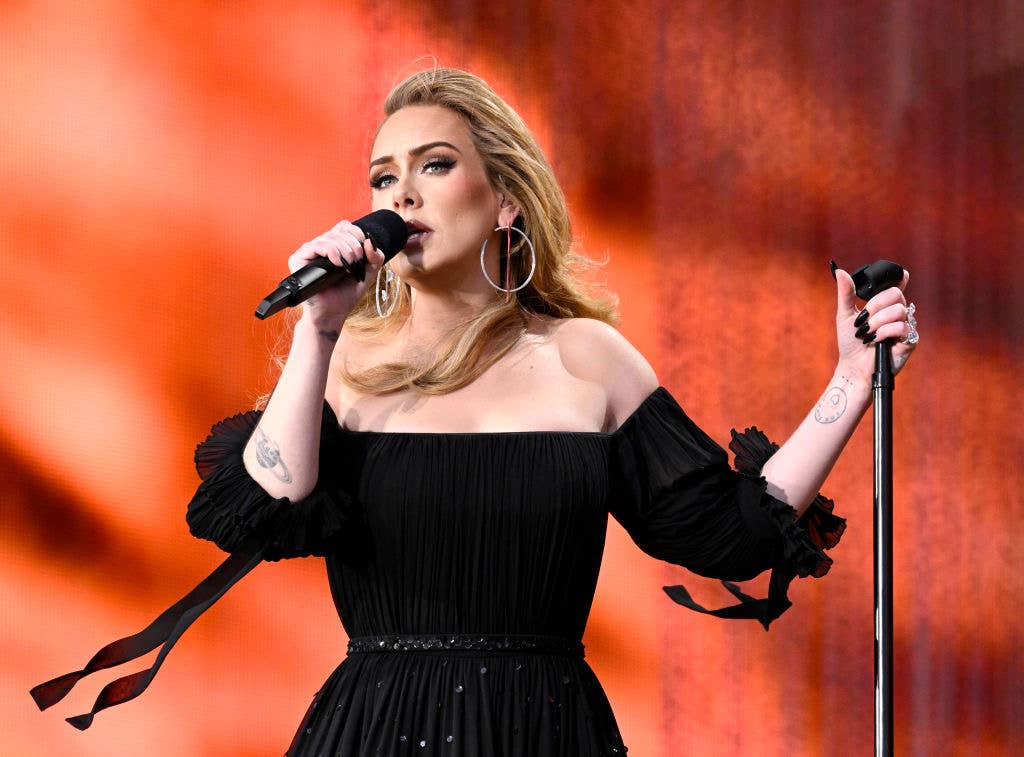
Forks Over Knives Founder on How to Eat to Prevent and Reverse Disease
What if you learned that you can prevent and reverse disease, just by changing your diet? Would it change your life? It transformed Brian Wendel's existence, a decade ago, as he set out to share what he had learned. The founder of Forks Over Knives began his journey when he became "curious" about nutrition. This led him to ditch his job, make a life-altering documentary, and follow it up by launching a media empire that has saved millions of lives.
What if it were possible to prevent and reverse symptoms of heart disease, dial down your risk of cancer, stave off type 2 diabetes, sidestep Alzheimer's, and wave away dozens of other conditions that you thought were baked into your DNA? What if you could achieve all of this without drugs or a magic genie in a bottle to grant you wishes. What if you could make this happen, just by choosing the foods you eat?
This was the musing of Brian Wendel, founder and creator of Forks Over Knives, the seminal and influential documentary on the effects of plant-based nutrition on health. Wendel sat down with The Beet to discuss why he felt compelled to leave his real estate job ten years ago to make this movie, then start an online movement and community dedicated to the idea that plant-based eating can change the outcome of human health. It led him to change the trajectory of his life, and ultimately help save the lives of millions of others who have seen the film. It all began with attending a panel and listening with an open mind and a curious heart.
Wendel is modest, an unlikely crusader who has had an untold impact on the health of humanity and the planet. It was his intelligence, instinct, and passion that sparked him to make a documentary about what he had learned. He wanted to share how, by choosing whole foods that are minimally processed and do not contain animal products, you could halt and reverse disease.
He is not a doctor, but his decision to interview leading doctors and researchers at the forefront of this new science, on camera, for a film made him a catalyst for awareness, education, and life-saving, eye-opening viewing. The Beet would not be here without Forks Over Knives. We know whose shoulders we stand on. Here is an interview with Wendel. His passion is nothing short of inspiring. Let's rewind nearly 20 years ago; Wendel says it all started when he heard something that "made a lot of sense." Where that would lead, no one could have expected.
The Beet. Where did this all start? Did you know you were going to make Forks?
BW: "I actually went plant-based in 2001 and even before then I was becoming more and more interested in nutrition. I gave up red meat, but I was still eating a lot of dairy and fish. there was a holistic conference at the New Yorker Hotel and there was a panel discussion on nutrition and I went, and there was Barry Sears himself and Atkins (not Robert himself but someone from the Atkins organization) and a couple of other people, and this one guy on the panel who was advocating for the vegan lifestyle. And everyone had such a complicated approach and the Zone Diet was balancing this and that, and this one guy on the panel said: "I just eat fruits and vegetables and grains and I get all the nutrients and protein I need." And I thought this sounded so simple. And I wanted to try it. It sounded so simple. He was this guy from Portland. He was just advocating for a vegan lifestyle.
"At the time, I was interested in the New York dining scene, so even though I was into getting healthier I was still going out. And I decided to try it for a few days. I wanted to see how it made you feel. I never went back.
"I did think there was some truth to what he had been saying. He had said, "We don't need to drink the milk of another species." It was not overly scientific and I tried it and that was it. There were a couple of vegan restaurants like Candle Cafe so I could still go out."
The Beet. So how did this lead you to make a movie called Forks Over Knives?
BW: "I wanted to let people know the power of a whole food plant-based diet. I wasn't calling it that. I was calling it a healthy vegan diet. And that was how I lived for many years, with starches and fruits in the center of my plate. I was becoming a student of the lifestyle. I was a healthy vegan enthusiast for many years. As the years went by I read more and more and read about the work of doctors John McDougall and Neal Barnard and Dr. Pritikin. And when I read The China Study in 2008. It was a tipping point, as I realized the case for a whole-food plant-based was so powerful. Though I was in the real estate business, I was being convinced by all I was reading and I thought, "What can I do to make a splash?"
"It's a positive story, that we have more control over our disease outcome than what we ever realized. A lot of people don't know that, or didn't know it at that time. They thought diet might make a little difference but that diseases are things that happen to us. But what I was reading is that diseases don't have to happen to us. So if you have heart disease you can stop the progression and you can even reverse it."
The Beet. So you decided to interview the docs and film them to get that message out?
BW: "Yes. But at the time we didn't know we were going to build the film around Dr. Caldwell Esselstyn and T. Colin Campbell ... in a three-week period, we met both Esselstyn and Campbell. We were reading their books and we realized they had a lot in common. They both grew up on farms, they both had once believed that milk was nature's perfect foods and they both were at leading research centers [The Cleveland Clinic and Cornell] and they both had a seminal moment and realized that a plant-based diet can save lives.
"We were talking to this group of doctors like Dr. Neal Barnard and Dr. Matthew Lederman and others. But that period of time we met Esselstyn and then later we went to meet Dr. Campbell and both of them immediately said: "Whatever you want to do, we are down." Basically, every expert in this space has been so gracious.
"Lee Fulkerson the director and I had a realization. After getting to know Esselstyn and then Campbell, we realized we should build the whole film around these two guys and center it around their stories. Their stories were the most compelling. The fact that they were on the other side at one point -- brought up on dairy farms -- gave us the story thread. As soon as we decided that we were off and running. It took about two years and then two more months to get it into the theatres. It started in Jan 2009 and it was in theatres in May 2011. It was a whole journey to get it out into the world.
The Beet. What happened? How did you get it distributed? I mean now it's on Netflix!
BW: "The whole thing of getting it into theatres is all pretty crazy. We decided to go with a less conventional approach. We knew we had something that would resonate with the public. We were thinking of an advanced screening program. We collaborated with local Whole Foods to do 30 advance screenings at theatres near the stores, but we had to make separate arrangements in each market. The screenings were wildly successful and all except one was sold out, often with lines down the street. Forks became popular and it resonated with people, and we would get emails from fans. One guy wrote to us and said, "You are costing people's lives by not releasing it now."
The Beet. So that was it? Off to the races?
BW: "Despite the success of the advanced screenings and the popularity we were achieving on Facebook we still had trouble getting distribution in theatres. So in January of 2011, we decided to rent a movie theatre in Portland, Oregon, and register ourselves with a national movie tracking system to get recognized. It was pretty risky because we had to rent the theatre out for a week and hold showings like a regular movie, with no guarantee that we would sell any tickets. The first weekend we had sell-outs for nearly every show, even the matinées. And because we were registered with this box office company, after that we were able to book theatres around the country. They wanted to book Forks Over Knives, which was exciting. So we were our own distributor.
"We agreed to have a May release of the film. We kicked it off with a red-carpet premiere in Los Angeles, with celebrities and the whole thing. Finally, we had the movie up on 90 screens nationwide. Not all at once, though, because we didn't have 90 film prints. We ended up getting on the Dr. Oz Show and Bill Maher. It was one of the top-grossing documentaries that year, but when the DVD came out and it began streaming on Netflix, that was when things went really crazy.
"At the time, going onto Netflix was not the popular choice since people thought that it would eat into DVD sales. The conventional wisdom was that going on Netflix would cannibalize DVD sales. However my distributor, Virgil Films, advised me that it could create a wild buzz, and they turned out to be right. Netflix was a great step. By then people were looking for content on Netflix. Celebrities were tweeting about it to millions and millions of followers. Kristen Bell and Dax Shepherd, Danny Devito, and others tweeted about it. Oprah and Alicia Silverstone talked about it on their own channels. Steve Nash, Arian Foster, and other athletes were into it."
Q. Did you quit your day job to launch the books and the online content?
BW: "I kept thinking I would go back to real estate. At the end of the movie during the Q and A sessions we had during the screenings, audience members would stand up and say the film was great, and “What do I do to start?” And I realized that I wanted to help answer that question. We started with a book, and it came out at about the same time as the movie. It was a companion book and I thought the book would sell only a few thousand copies. So we were able to get the book done shortly after the movie came out. And then it gets on the NY Times Bestseller list and it climbs and climbs, to Number 1. The book was doing well and I was having fun. So I thought, "I don't want to go back to my regular work."
"There really wasn't anything about healthy veganism out there, not like today. There was a gap there that needed to be filled. So we started working on a Forks Over Knives Cookbook and then that was on the bestseller list. I was literally the website editor, the social media marketer and doing so much of it, and along with one other guy. We were doing whatever we needed to do to sustain the business. We were reaching millions, and I knew I had to keep going.
"By this time the name started to make sense. Forks Over Knives means that what you eat is your chance to make a choice to not have bypass surgery or go under the knife someday. The knife is really a metaphor for someone choosing to eat healthily rather than needing to become a patient in the medical system.
"We were putting things up on FB and Twitter. By 2014 was our big moment and we had to decide if we were going to continue going on this road. We realized we would have to create a website and invest in it. We developed a responsive website and when it was done we hired a full-time editor in chief. I had no idea where the business was going. We were able to grow the website and businesses evolved from it. Over the course of the next few years, we sold a two-book deal with Simon & Schuster, created a mobile app, started an online cooking course, and developed a subscription meal planning business. It took a lot of work, a lot of hours in those early years, and at times it felt like we were scraping by.
The Beet. Could you have seen where this was going?
BW: This was all novel back then. At the time people knew you could be vegetarian or vegan, but few people knew that it was healthier for you. We would come back from filming a scene and think “Wow,” we could be on to something.
"We really felt we were revealing a news story, the news story being that we have more control over our disease outcomes than what most people ever realized. We saw the film as popularizing these concepts.
The Beet. What have been the biggest successes?
BW: The biggest success was being able to help popularize the concept that a plant-based diet is healthier than an omnivorous one. Before Forks, the common thinking was that you can “get by” eating only plant foods, but you really needed meat for protein and dairy for calcium in order to optimize health. We’re happy to have played a part in turning that thinking on its head in popular culture.
The second biggest success is "The whole Idea that we could turn a documentary into a business. Originally it was just going to be a movie. So the notion of converting the film into a business that served a different need is something I think is neat. While the film was able to persuade people about the benefits of a whole-food, plant-based lifestyle, the business helps them implement that lifestyle into their lives. We’re honored to be able to serve people in this way.
Top 10 Sources of Plant-Based Protein According to a Nutritionist
1. Seitan
Protein: 21 grams in ⅓ cup (1 ounce) Seitan isn’t as popular as other proteins, but it should be! Made from wheat gluten, its texture resembles ground meat. It’s often used in pre-made veggie burgers or meatless nuggets. Seitan has a savory taste, like mushrooms or chicken, so it works well in dishes that call for an umami flavor. With a hearty texture, seitan can be the star of practically any vegan main dish. Add it to stir-fries, sandwiches, burritos, burgers, or stews. Like tofu, seitan will take on the flavor of any marinade or sauce.
2. Tempeh
Protein: 16 grams in 3 ounces If you like a protein with a bit of bite, add tempeh to your list. Made from fermented soybeans, tempeh has a slightly nutty flavor and is pressed into a block. Most varieties include some sort of grains, such as barley or millet. Not only is tempeh a plant-based source of protein, but the fermentation process also creates good-for-your-gut probiotics. You can cut tempeh right off the block and use it as the base for a sandwich or pan-fry it with some sauce. Or, crumble, heat, and make it the star of your next taco night.
3. Lentils
Protein: 13 grams in ½ cup cooked Lentils come in multiple varieties--red, yellow, green, brown, black. Regardless of the type lentils are small but mighty nutritional powerhouses. They pack a good amount of protein as well as iron, folate, and fiber. When cooked, brown lentils retain their texture and can be the base for a grain bowl or make a hearty substitute for ground meat in meatballs, lasagna, tacos or Bolognese. Red lentils are a bit softer and make a nice add-in for a hearty soup, chili, or stew.
4. Hemp Seeds
Protein: 10 grams in 3 tablespoons Hemp seeds are a tender and nutty seed, derived from the hemp plant. They contain good amounts of omega-3s, iron, folate, magnesium, phosphorus, and manganese. They are also a solid source of both soluble and insoluble fiber, which helps to keep your digestive tract healthy and humming. Because they pack a double whammy of protein and healthy fats, hemp seeds can help satisfy hunger, preventing those embarrassing stomach growls as you slog your way to your lunch break. Add them to your morning smoothie or sprinkle them on top of yogurt, oatmeal, or even a salad.
5. Tofu
Protein: 9 grams in 3 ounces (⅕ of a block) Made from coagulated soybeans, tofu is the most popular plant-based protein. Soy is one of the only meatless "complete" proteins, meaning that it contains all of the essential amino acids that the body can’t make but needs for muscle and immune function. With 15% of your daily calcium needs, tofu is also a good replacement for dairy.
6. Edamame
Protein: 9 grams of protein in ½ cup This sushi appetizer is a nutrient powerhouse, so eat it anytime. Edamame is really just another name for soybeans in their pods. Let’s list off some stats--a small ½-cup serving of edamame has 9 grams of protein, 15% of your daily vitamin C, 10% of your daily iron and 16% of your daily fiber. Keep a bag of edamame in your freezer to serve as a fun-to-eat side dish or opt for the shelled variety to toss into salads or a grain bowl.
7. Quinoa
Protein: 8 grams per cup (cooked) Quinoa is an ancient grain and since it's gluten-free a great choice for anyone avoiding gluten. Add it to your burger recipe to create filling texture, or instead of meat in your taco or burrito. Quinoa is among the healthiest foods on the planet, delivering phytonutrients that have anti-inflammatory qualities, so keep it in your pantry for any meal that needs a filling grain. Just remember to soak it and rinse before cooking to get rid of any bitter taste.
8. Black Beans
Protein: 7 grams in ½ cup (canned) Eating beans on the regular might as well be a prerequisite for a plant-based diet. Not only are canned black beans inexpensive, but they also contribute 10% of your daily iron and 25% of your daily fiber to your diet. For less than $1 a can, beans can be the star of tacos, quesadillas, salads, soups, burgers, or dips.
9. Amaranth
Protein: 6 grams in ⅔ cup (cooked) Chances are you’ve never cooked amaranth. But you should, since this tiny, gluten- free grain is packed with almost 30% of your daily fiber and 20% of your daily iron. Cook it like a traditional grain to yield a soft, porridge-like texture. Many people add amaranth to other a hot breakfast cereal mixture, like oats and quinoa. It also pops like popcorn. Toss it in a pot with some oil and wait for it to pop up into a nutritious snack.
10. Peas
Protein: 5 grams in ⅔ cup If peas were one of your most hated veggies as a kid, it’s time to give them another chance. These green beans are a great low-calorie protein to keep in your freezer. Sure, they don’t always taste great when steamed or microwaved (who wants to eat mushy, overcooked peas?), but they do blend well into a yummy puree that can be slathered on toast. To amp up the flavor, add some lemon juice or mint to your mix before you blend.
More From The Beet






